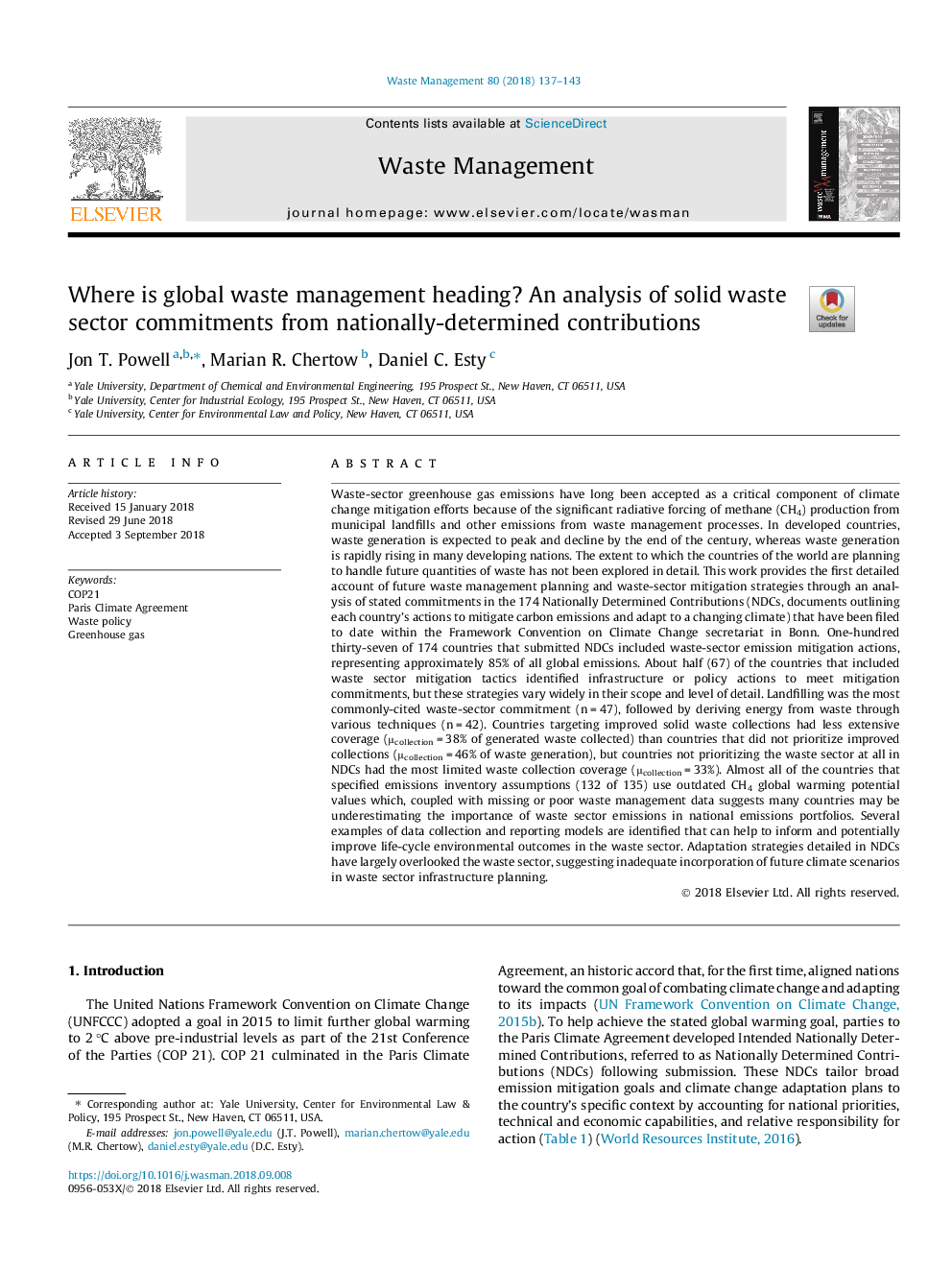| کد مقاله | کد نشریه | سال انتشار | مقاله انگلیسی | نسخه تمام متن |
|---|---|---|---|---|
| 8966010 | 1646759 | 2018 | 7 صفحه PDF | دانلود رایگان |
عنوان انگلیسی مقاله ISI
Where is global waste management heading? An analysis of solid waste sector commitments from nationally-determined contributions
ترجمه فارسی عنوان
کجا مدیریت جهانی مدیریت ضایعات است؟ تجزیه و تحلیل تعهدات بخش زباله های جامد از کمک های ملی تعیین شده
دانلود مقاله + سفارش ترجمه
دانلود مقاله ISI انگلیسی
رایگان برای ایرانیان
موضوعات مرتبط
مهندسی و علوم پایه
علوم زمین و سیارات
مهندسی ژئوتکنیک و زمین شناسی مهندسی
چکیده انگلیسی
Waste-sector greenhouse gas emissions have long been accepted as a critical component of climate change mitigation efforts because of the significant radiative forcing of methane (CH4) production from municipal landfills and other emissions from waste management processes. In developed countries, waste generation is expected to peak and decline by the end of the century, whereas waste generation is rapidly rising in many developing nations. The extent to which the countries of the world are planning to handle future quantities of waste has not been explored in detail. This work provides the first detailed account of future waste management planning and waste-sector mitigation strategies through an analysis of stated commitments in the 174 Nationally Determined Contributions (NDCs, documents outlining each country's actions to mitigate carbon emissions and adapt to a changing climate) that have been filed to date within the Framework Convention on Climate Change secretariat in Bonn. One-hundred thirty-seven of 174 countries that submitted NDCs included waste-sector emission mitigation actions, representing approximately 85% of all global emissions. About half (67) of the countries that included waste sector mitigation tactics identified infrastructure or policy actions to meet mitigation commitments, but these strategies vary widely in their scope and level of detail. Landfilling was the most commonly-cited waste-sector commitment (nâ¯=â¯47), followed by deriving energy from waste through various techniques (nâ¯=â¯42). Countries targeting improved solid waste collections had less extensive coverage (µcollectionâ¯=â¯38% of generated waste collected) than countries that did not prioritize improved collections (µcollectionâ¯=â¯46% of waste generation), but countries not prioritizing the waste sector at all in NDCs had the most limited waste collection coverage (µcollectionâ¯=â¯33%). Almost all of the countries that specified emissions inventory assumptions (132 of 135) use outdated CH4 global warming potential values which, coupled with missing or poor waste management data suggests many countries may be underestimating the importance of waste sector emissions in national emissions portfolios. Several examples of data collection and reporting models are identified that can help to inform and potentially improve life-cycle environmental outcomes in the waste sector. Adaptation strategies detailed in NDCs have largely overlooked the waste sector, suggesting inadequate incorporation of future climate scenarios in waste sector infrastructure planning.
ناشر
Database: Elsevier - ScienceDirect (ساینس دایرکت)
Journal: Waste Management - Volume 80, October 2018, Pages 137-143
Journal: Waste Management - Volume 80, October 2018, Pages 137-143
نویسندگان
Jon T. Powell, Marian R. Chertow, Daniel C. Esty,
